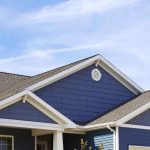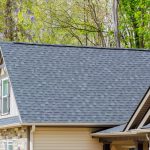Now that the weather is turning a little bit colder, we’re turning our sights from building bigger, better, more energy efficient homes to a smaller, sounder, infinitely more tasty structure – the gingerbread house. (We may be tough guys but the holiday’s really bring out the kid in us.)
Whether you’re a total novice or an old hat, everyone can use a hand now and then, and we applied our professional know-how to compile a list of tips on how to build a better gingerbread house this season.
First and foremost, you need gingerbread. You’ll have a lot more control over the quality of the finished product if you make the gingerbread yourself. This gingerbread recipe from Simply Recipes is really simple to follow, and includes printable templates for cutting out the necessary wall and roof sections. But if you find yourself challenged in the baking department, there’s nothing wrong with buying your gingerbread pre-made.
A gingerbread house won’t stay together of its own volition, so you’re going to need something to hold the walls in place. In new home construction, we use screws, nails and wood. In gingerbread construction you’re going to use sugar, and lots of it.
Traditionally, gingerbread houses are glued together using royal icing, a sticky concoction made up of meringue powder, powered sugar (at least a pound) and water. Royal icing acts as the cement to hold the pieces together, and you can pipe it on with a piping bag.
Then there’s this incredibly neat and handy-dandy trick that the geniuses over at Instructables shared and had us wishing we’d thought of it first: transform an ordinary glue gun into a sugar glue gun! All you need is a glue gun, some aluminium foil to mould your molten sugar into glue sticks, and time.
Hold on a second! This DIY tip is great, promises to be time saving and produce fantastic results, but you should always exercise caution when using products not originally intended for food. Start with a new glue gun to avoid any cross contamination.
A strong foundation is key to a house that will stand the test of time. Pipe chocolate onto your display board (or plate, etc) to create a strong and quick-drying foundation.
Place your walls, cementing them together with the royal icing (or sugar glue). To strengthen your walls, you can paint the gingerbread with molten hot chocolate to bond the bread and create a solid mass. Extra squares of gingerbread cut into triangles can act as angle supports when glued on the inside of the house.
Alternatively, if you don’t plan on eating your gingerbread house, you can attach the gingerbread walls to a foam model.
Assembly tip: Building a gingerbread house is a fun project but should never be rushed. Allow for several days to assemble. If baking your own gingerbread, let it dry for two days. Once you’ve attached the walls, let the royal icing set overnight before attaching the roof.
Cracks and chips? Mix a little royal icing with brown food colouring and rub it into cracks, and then smooth down with a fine grain sand paper. Chips can also be reattached with royal icing.
Don’t forget to provide some extra support for that roof, especially a flat roof, since over time it can bow.
To decorate you’re house, you’ll need a good quality, thick frosting, like buttercream, and food colouring to really make the house pop, as well as your favourite candy, sprinkles, cookie crumbles, popcorn and any other bits and bobs you may want to use to improve your gingerbread house curb appeal.





